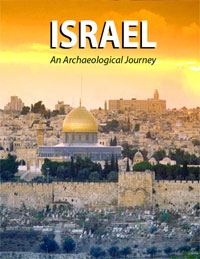Conrad Schick was born in 1822, in a small town in southern Germany. By the time of his death in 1901, however, he had cemented himself among the founding fathers of the archaeology of Jerusalem. Among other things, Schick was an architect, an archaeologist, a protestant missionary, and a key figure in Ottoman Jerusalem. Beyond changing the field of Jerusalem archaeology, he also shaped the modern city itself. In 2022, we celebrate not only Schick’s birthday but the life of a man who helped establish the foundations of the archaeology of the Holy City.
Schick moved to Jerusalem in 1846 as part of the Swiss mission to Palestine but soon joined the Anglican mission that would become Christ Church, the first Protestant church in the Middle East. From the very beginning, Schick had a fervent passion for learning and, despite having never formally studied archaeology, became intimately involved in nearly all archaeological endeavors within the walls of the Old City. Throughout his career, Schick became the foremost scholar on many of the Old City’s most notable and revered sites, including the Holy Sepulcher, the Temple Mount or Noble Sanctuary, and Jerusalem’s ancient water systems. He was also heavily involved in the study of the Siloam Tunnel and its famous inscription, and was the first scholar to publish a description of Jerusalem’s Garden Tomb. Schick published upwards of 250 scholarly articles, many of which can be found in the pages of the journal of the Palestine Exploration Fund.
Among Schick’s more significant contributions to the field were his scale models of the city and its features, including a highly detailed model (measuring nearly 5 by 6 feet) of the Holy Sepulchre. Most remarkable, however, is his model of the Temple Mount/Noble Sanctuary as it stood in the late 19th century. As a well-known and respected figure in the Jerusalem community, the Ottoman authorities approached Schick in 1872 to ask him to construct a replica of the site for the 1873 Vienna World’s Fair. Schick readily accepted and, as the official modeler for the Ottoman sultan, was allowed to travel throughout the sacred complex, visiting hidden and underground features that he then documented in his nearly 6-by-8 foot model of the Temple Mount. His model and notes still provide some of the most detailed information about the features of the massive platform and enclosure at the heart of Jerusalem. Among other things, the model records the interiors of the Dome of the Rock and the Al-Aqsa Mosque and even shows archaeological features dating to the Byzantine and Second Temple periods. Many of Schick’s models, including those of the Holy Sepulchre and the Temple Mount/Noble Sanctuary, are now on display at Christ Church in Jerusalem’s Old City.

Conrad Schick’s model provides a rare glimpse of the areas beneath the sacred platform as they were recorded by Schick in the late 19th century.
Credit: Nathan Steinmeyer
Beyond his work in archaeology, Schick was heavily involved in Christian life within Jerusalem and was a teacher and headmaster at the house of industry, where he had a hand in the creation of the city’s olive wood industry. Schick also designed numerous buildings throughout Jerusalem, many of which still stand today. He even design some of the first neighborhoods outside of the walls of the Old City.
Although perhaps not as well known as other early scholars and explorers, Schick’s contributions to our understanding of the Old City of Jerusalem, both in antiquity and in the 19th century, firmly place him amongst the likes of Charles Warren, Charles Wilson, and Flinders Petrie as key figures in the development of the city’s archaeology.

Special thanks to Dr. Shirley Graetz for her assistance with this article. Dr. Graetz is an Israeli tour guide and author who is currently writing an historical novel about the life of Conrad Schick.
Read more in BHD:
Important Temple Mount Model Returns to Jerusalem
The Temple Mount in the Herodian Period (37 BC–70 A.D.)
Herod’s Temple Mount Revealed in Al-Aqsa Mosque Restoration
What the Temple Mount Floor Looked Like
Members, read more in the BAS Library:
Sir Flinders Petrie: Father of Palestinian Archaeology
Charles Warren vs. James Fergusson
Not an All-Access member yet? Join Now!
The post The Foundations of Jerusalem Archaeology appeared first on Biblical Archaeology Society.




0 Commentaires